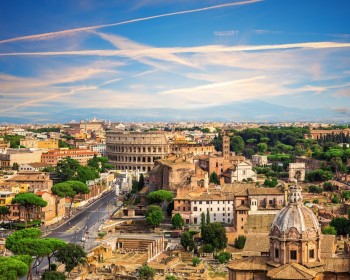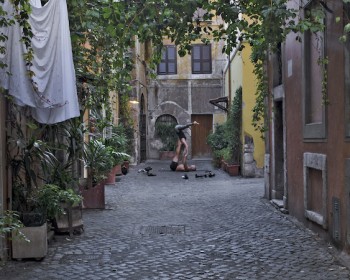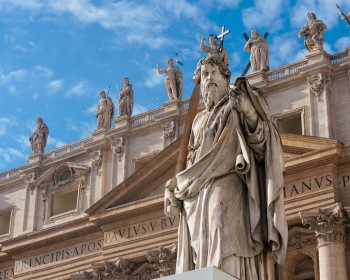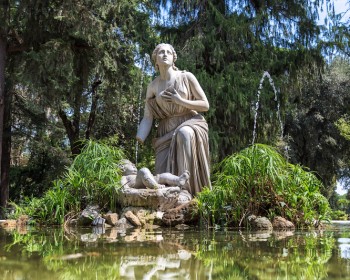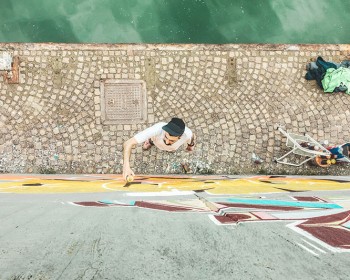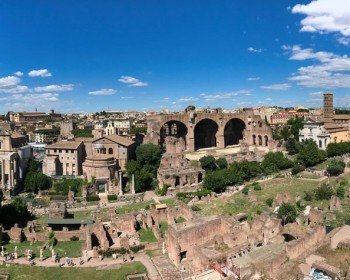Rome by night is like a lit up theatre. The eternal city offers very suggestive views, from the main monuments lit up by yellow lamps to the narrow streets of the quarter of Trastevere.
Planning your trip to Rome from May to October is the best option to admire the city: you can stay up late and escape the hot temperatures of your hotel’s room by taking a stroll around the city centre! Read our article to find out two possibile itineraries and available guided tours.
Rome by Night: historical itinerary
1. Capitoline Hill
If you want to enjoy a breathtaking view of the best monuments of Rome by Night you can start from the Capitoline Hill. Walk up its steps to reach the equestrian statue of Marcus Aurelius, standing in the middle of the piazza set in a paved oval field, all designed by Michelangelo. From there you can enjoy a fantastic panorama, because the piazza overlooks all the ruins of the Roman Forum.
2. Roman Forum
Climb down the Capitoline Hill’s steps and walk down on Via dei Fori Imperiali. All the ruins you’ve seen from he Hill will be on both your sides, to be admired in all their beauty. The end of the street will bring you directly to the Colosseum, which is beautiful during the day, but really stands out when it’s lit up at night.
3. Theatre of Marcellus: the mini-colosseum!
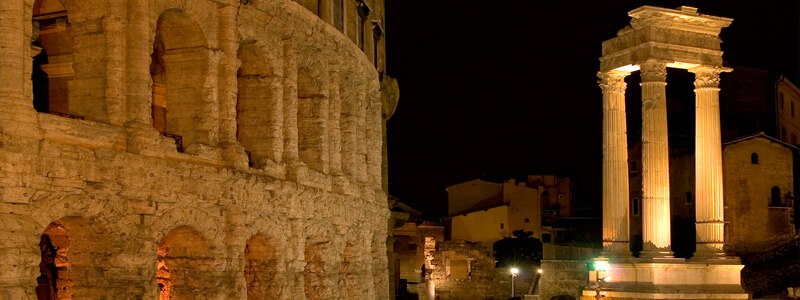
Within walking distance you can find what is commonly known as the “mini-Colosseum”. It is the Theatre of Marcellus, an ancient open-up theatre which really looks like a smaller version of the Colosseum.
4. Porticus Octavia
Continue your stroll of Rome by Night by taking some time to visit the Porticus Octaviae (Octavia’s Gate). The ancient structure (or what is left of it) was built by Augustus in the name of his sister, Octavia Minor, sometime after 27 BC. The building, which lies in rione Sant’Angelo, represents the center of the Roman Ghetto, which still today hosts a Sinagogue and many shops and restaurants owned by Jewish Romans.
5. Largo di Torre Argentina: Pompey’s Theatre
End your romantic trip of Rome by Night paying a visit to Largo di Torre Argentina, that hosts four Republican Roman temples, and the remains of Pompey’s Theatre. Along the stretch of covered arcade (of which, today, only some ruins are still visible), Pompeius had built rooms dedicated to the exposition of art and other works he collected during his campaigns and a curia (a court) for political meetings. It was just in that spot that Julius Caesar’s famous murdering took place on 15 March 44 BC.
6. Santa Maria del Popolo
If you’re tired of seeing historical places and you’d like a simple walk around the city centre you can start your tour from Piazza del Popolo, home of the Church of Santa Maria del Popolo and of two twin churches, standing side by side, called Santa Maria in Montesanto and Santa Maria dei Miracoli.
Between the two twin churches the most important shopping street of Rome, via del Corso, stretches out. During day time Via del Corso is the perfect destination if you want to shop for high-fashion made in Italy clothes and accessories.
7. Spanish Steps – Piazza di Spagna
Halfway through Via del Corso, turn left on Via dei Condotti and you’ll find yourself on one of the most famous places in Rome: Piazza di Spagna, with the famous Spanish Steps and the Baroque fresh-water fountain of Fontana della Barcaccia (literally Fountain of the Ugly Boat), built by Italian architect Bernini.
8. Trevi Fountain
A further 10 minutes walking will let you reach the final stop of this itinerary. Another world-famous fountain is waiting for you: Trevi Fountain, the Baroque marble monument appearing in the famous movie directed by Fellini’s movie “La Dolce Vita”, starring Marcello Mastroianni and Anita Hekberg. You’ll be lost for words for the beauty of this fountain, which has been recently restored and cleaned. Admire the details of its sculptures, especially that of God Oceanus standing in the middle, a metaphore of the waters flowing in Rome’s aqueducts all over the city.




